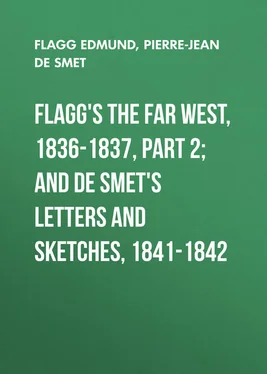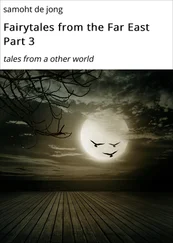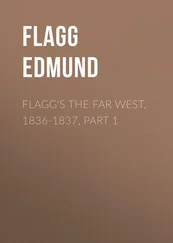Edmund Flagg - Flagg's The Far West, 1836-1837, part 2; and De Smet's Letters and Sketches, 1841-1842
Здесь есть возможность читать онлайн «Edmund Flagg - Flagg's The Far West, 1836-1837, part 2; and De Smet's Letters and Sketches, 1841-1842» — ознакомительный отрывок электронной книги совершенно бесплатно, а после прочтения отрывка купить полную версию. В некоторых случаях можно слушать аудио, скачать через торрент в формате fb2 и присутствует краткое содержание. Издательство: Иностранный паблик, Жанр: foreign_antique, foreign_prose, на английском языке. Описание произведения, (предисловие) а так же отзывы посетителей доступны на портале библиотеки ЛибКат.
- Название:Flagg's The Far West, 1836-1837, part 2; and De Smet's Letters and Sketches, 1841-1842
- Автор:
- Издательство:Иностранный паблик
- Жанр:
- Год:неизвестен
- ISBN:нет данных
- Рейтинг книги:4 / 5. Голосов: 1
-
Избранное:Добавить в избранное
- Отзывы:
-
Ваша оценка:
- 80
- 1
- 2
- 3
- 4
- 5
Flagg's The Far West, 1836-1837, part 2; and De Smet's Letters and Sketches, 1841-1842: краткое содержание, описание и аннотация
Предлагаем к чтению аннотацию, описание, краткое содержание или предисловие (зависит от того, что написал сам автор книги «Flagg's The Far West, 1836-1837, part 2; and De Smet's Letters and Sketches, 1841-1842»). Если вы не нашли необходимую информацию о книге — напишите в комментариях, мы постараемся отыскать её.
Flagg's The Far West, 1836-1837, part 2; and De Smet's Letters and Sketches, 1841-1842 — читать онлайн ознакомительный отрывок
Ниже представлен текст книги, разбитый по страницам. Система сохранения места последней прочитанной страницы, позволяет с удобством читать онлайн бесплатно книгу «Flagg's The Far West, 1836-1837, part 2; and De Smet's Letters and Sketches, 1841-1842», без необходимости каждый раз заново искать на чём Вы остановились. Поставьте закладку, и сможете в любой момент перейти на страницу, на которой закончили чтение.
Интервал:
Закладка:
34
Breckenridge – to whom the author is indebted for other facts relative to these early settlements. – Flagg.
Comment by Ed. Henry Marie Brackenridge (not Breckenridge), Views of Louisiana (Pittsburgh, 1814).
35
Sganarelle. – Flagg.
Comment by Ed. Sganarelle is a character in Molière's plays, notably in "Le Médicin malgré lui."
36
A land-office was established at Kaskaskia by act of Congress approved March 26, 1804, "for so much of the lands included within the boundaries fixed by the treaty of the thirteenth of August, one thousand eight hundred and three, with the Kaskaskia tribe of Indians, as is not claimed by any other Indian tribe;" this was discontinued by order of the president, November 12, 1855. The records were transferred to Springfield the following February. – Ed.
37
During the Indian troubles a fort was erected in 1736 on an eminence, later known as Garrison Hill, opposite Kaskaskia. It was repaired and occupied by a French garrison at the opening of the French and Indian War. In 1766 the fort was burned, but another soon afterward built, was occupied by the English (1772) and named Fort Gage, in honor of the British commander-in-chief. On the night of July 4, 1778, Colonel George Rogers Clark captured the fort and made it his headquarters while in Illinois. It was abandoned at the close of the Revolution, but was re-occupied for a short time by American troops in 1801. Colonel Pike's regiment was stationed there for a short period. See R. G. Thwaites, How George Rogers Clark Won the Northwest (Chicago, 1903). – Ed.
38
The reader will recollect that these notes were sketched two years ago. Since that time some changes in this old edifice have taken place; the whole southwest angle has fallen to the ground, and, agreeable to the text, the entire roof would have followed but for the extraordinary strength of one solitary piece of timber. High mass was in celebration at the time, and the church was crowded, but no accident occurred. The old building has been since dismantled, however; its bell removed from the tower, and the whole structure will soon, probably, be prostrated by "decay's effacing finger." – Flagg.
39
The earliest "extract from the baptismal records of the mission among the Illinois, under the title of the Immaculate conception of Our Lady," bears date March 20, 1692. The first ceremony recorded after the removal of the mission to Kaskaskia, was performed April 17, 1701. See "Kaskaskia Church Records," in Illinois State Historical Library Publications (Springfield, 1904), pp. 394-413; Edward G. Mason, "Kaskaskia and its Parish Records," in Fergus Historical Series , No. 12 (Chicago, 1881), pp. 1-22; C. W. Alvord, The Old Kaskaskia Records (Chicago Historical Society, 1906); Magazine of American History , vi, pp. 161-182; Michigan Pioneer Collections , v, pp. 94-109. – Ed.
40
A convent of the Visitation was established at Kaskaskia in May, 1833, by a colony from the parent house at Georgetown, District of Columbia. It was patronized by Pierre Menard, and connected with the academy named in his honor. A large building was erected and opened for pupils in 1836. The institution enjoyed a high reputation until the flood of 1844 forced its abandonment. See History of Randolph, Monroe, and Perry Counties , p. 308. – Ed.
41
I give the tradition of the farmers now resident upon the spot. History differs somewhat.
Most of the historical facts relative to the extermination of the Abnaquis will be found condensed in the subjoined extract from a late valuable work.
"Determined on destroying this assemblage of Indians, which was the headquarters of the whole eastern country at this time, the English, in 1724, sent out a force, consisting of 208 men and three Mohawk Indians, under Captains Moulton , Harman , and Bourne , to humble them. They came upon the village the 23d August, when there was not a man in arms to oppose them. They had left 40 of their men at Teconet Falls, which is now within the town of Winslow, upon the Kennebeck, and about two miles below Waterville College, upon the opposite side of the river. The English had divided themselves into three squadrons: 80, under Harman , proceeded by a circuitous route, thinking to surprise some in their cornfields, while Moulton , with 80 more, proceeded directly for the village, which, being surrounded by trees, could not be seen until they were close upon it. All were in their wigwams, and the English advanced slowly and in perfect silence. When pretty near, an Indian came out of his wigwam, and, accidentally discovering the English, ran in and seized his gun, and giving the warwhoop, in a few minutes the warriors were all in arms, and advancing to meet them. Moulton ordered his men not to fire until the Indians had made the first discharge. This order was obeyed, and, as he expected, they overshot the English, who then fired upon them in their turn, and did great execution. When the Indians had given another volley, they fled with great precipitation to the river, whither the chief of their women and children had also fled during the fight. Some of the English pursued and killed many of them in the river, and others fell to pillaging and burning the village. Mogg , their chief, disdained to fly with the rest, but kept possession of a wigwam, from which he fired upon the pillagers. In one of his discharges he killed a Mohawk, whose brother, observing it, rushed upon and killed him; and thus ended the strife. There were about 60 warriors in the place, about one half of whom were killed.
"The famous Rasle shut himself up in his house, from which he fired upon the English; and, having wounded one, Lieutenant Jaques , of Newbury, burst open the door, and shot him through the head, although Moulton had given orders that none should kill him. He had an English boy with him, about 14 years old, who had been taken some time before from the frontiers, and whom the English reported Rasle was about to kill. Great brutality and ferocity are chargeable to the English in this affair, according to their own account; such as killing women and children, and scalping and mangling the body of Father Rasle .
"There was here a handsome church, with a bell, on which the English committed a double sacrilege, first robbing it, then setting it on fire; herein surpassing the act of the first English circumnavigator in his depredations upon the Spaniards in South America; for he only took away the gold and silver vessels of a church, and its crucifix, because it was of massy gold, set about with diamonds, and that, too, upon the advice of his chaplain. 'This might pass,' says a reverend author, 'for sea divinity, but justice is quite another thing.' Perhaps it will be as well not to inquire here what kind of divinity would authorize the acts recorded in these wars, or, indeed, any wars.
"Upon this memorable event in our early annals, Father Charlevoix should be heard. There were not, says he, at the time the attack was made, above 50 warriors at Neridgewok; these seized their arms, and run in disorder, not to defend the place against an enemy who was already in it, but to favour the flight of the women, the old men, and the children, and to give them time to gain the side of the river, which was not yet in possession of the English. Father Rasle, warned by the clamours and tumult, and the danger in which he found his proselytes, ran to present himself to the assailants, hoping to draw all their fury upon him, that thereby he might prove the salvation of his flock. His hope was vain; for hardly had he discovered himself, when the English raised a great shout, which was followed by a shower of shot, by which he fell dead near to the cross which he had erected in the centre of the village: seven Indians who attended him, and who endeavoured to shield him with their own bodies, fell dead at his side. Thus died this charitable pastor, giving his life for his sheep, after 37 years of painful labours.
Читать дальшеИнтервал:
Закладка:
Похожие книги на «Flagg's The Far West, 1836-1837, part 2; and De Smet's Letters and Sketches, 1841-1842»
Представляем Вашему вниманию похожие книги на «Flagg's The Far West, 1836-1837, part 2; and De Smet's Letters and Sketches, 1841-1842» списком для выбора. Мы отобрали схожую по названию и смыслу литературу в надежде предоставить читателям больше вариантов отыскать новые, интересные, ещё непрочитанные произведения.
Обсуждение, отзывы о книге «Flagg's The Far West, 1836-1837, part 2; and De Smet's Letters and Sketches, 1841-1842» и просто собственные мнения читателей. Оставьте ваши комментарии, напишите, что Вы думаете о произведении, его смысле или главных героях. Укажите что конкретно понравилось, а что нет, и почему Вы так считаете.












